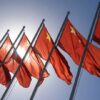🔴 Website 👉 https://u-s-news.com/
Telegram 👉 https://t.me/usnewscom_channel
As China slams the door on EU-made medical devices, in an epic tit-for-tat with Brussels’ “fairness” crusade, one has to wonder—how much more self-inflicted economic pain do Western bureaucrats want to inflict before common sense finally gets a word in?
At a Glance
- China bans EU companies without local operations from lucrative government medical device contracts, escalating the trade war with Europe.
- The EU’s International Procurement Instrument triggered this standoff, excluding Chinese manufacturers from major European tenders.
- Both sides are now locked into a spiral of protectionism, with patients and manufacturers paying the price.
- This is the latest volley in a long-running pattern of retaliatory tariffs, quotas, and bureaucratic overreach undermining free markets and global supply chains.
China Strikes Back: EU Medical Devices Banned from Major Government Contracts
China’s Ministry of Finance wasted no time firing back at the EU’s procurement restrictions, announcing that, effective immediately, European companies without operations in China are now barred from bidding on government medical device contracts worth over 45 million yuan (roughly $6.3 million). The move targets companies that have stubbornly refused to uproot and set up shop in China, forcing them to either play by Beijing’s rules or forfeit access to one of the world’s largest healthcare markets. China’s statement made clear this was a “last resort,” blaming the EU for “building new protectionist barriers”—a phrase Western officials themselves have used for years when facing down foreign red tape.
The restriction, notably, does not apply to EU companies that have already moved manufacturing or significant operations to China—yet another nudge for multinationals to abandon their home base and invest abroad, at the expense of European jobs and technological leadership. Non-EU firms can still bid, provided they don’t use more than half EU-made devices. So, the message is clear: the more European you are, the less welcome you are—unless, of course, you’ve already surrendered your supply chain to Beijing.
How Did We Get Here? Regulatory Overreach, Reciprocity, and the Death of Free Markets
This mess traces its roots to the EU’s 2022 adoption of the International Procurement Instrument, a regulatory sledgehammer dressed up as a tool for “fairness.” Brussels, always eager to signal virtue, decided to exclude Chinese medical device makers from public tenders above €5 million for five years and cap the Chinese content in contracts. This, of course, after years of whining about “unfair” Chinese barriers to European products. For those of us who still believe in free markets, the irony is thick enough to cut with a scalpel.
Rather than negotiate in good faith or, better yet, let the best product win, both sides have doubled down on protectionism. The EU’s move prompted immediate retaliation—not just in medical devices, but across a spectrum of goods. Chinese authorities slapped anti-dumping duties on European brandy and launched investigations into pork and dairy imports. Meanwhile, the EU has hit back with tariffs on Chinese electric vehicles and other tech products, fueling an endless cycle of bureaucratic bickering that accomplishes nothing but driving up costs for consumers and businesses.
Who Pays? Manufacturers, Healthcare Providers, and—Surprise—Patients
As usual, the real losers in this high-stakes game of regulatory chicken are not the pencil-pushers in Brussels or Beijing, but the people who rely on competitive, affordable healthcare. European medical device firms—especially the smaller ones—are being forced out of the Chinese market unless they’re willing to shift production overseas. Chinese device makers face the same fate in Europe. Hospitals and clinics in both regions will see fewer suppliers and higher prices as a result. And who picks up the tab? Patients, of course, through longer waits, higher bills, and less innovation.
For American readers who’ve watched this kind of government meddling wreck our own industries—think steel, autos, energy, and more—the pattern is depressingly familiar. Bureaucrats claim they’re leveling the playing field, but the only thing they ever level is opportunity and prosperity, right into the ground. Instead of protecting local jobs or ensuring quality, these trade wars end up subsidizing inefficiency, encouraging offshore manufacturing, and rewarding whoever is best at gaming the rules—not whoever is best at serving the patient or the public.
What’s Next? More Retaliation, Fewer Choices, and a Race to the Bottom
Without a course correction, this spiral of protectionism is only going to accelerate. Both Europe and China are now incentivizing companies to localize supply chains, further fragmenting global markets and driving up costs. Industry groups and trade lawyers warn that these “tit-for-tat” measures risk setting a dangerous precedent, making future cooperation even harder. Some experts try to spin this as a necessary wake-up call to force negotiations, but history shows that reciprocal retaliation rarely leads to lasting solutions—just more bureaucracy and higher prices.
Meanwhile, political leaders on both sides are under pressure to appear “tough” on trade, leaving little room for compromise or common sense. The result is a lose-lose scenario that punishes innovation and rewards only the most entrenched interests—at the expense of patients, workers, and taxpayers everywhere. The medical device sector is now a canary in the coal mine for anyone who still thinks global free markets might survive the current wave of interventionism and government overreach.
Sources:
South China Morning Post, July 6, 2025
King & Spalding, June 24, 2025

